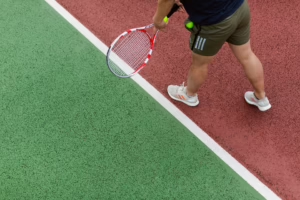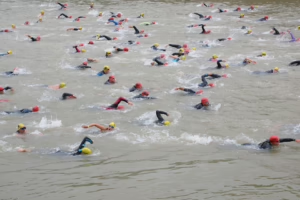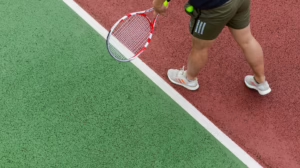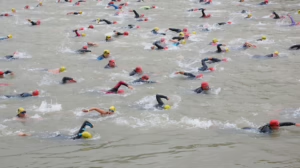Exploring the Science Behind Pressure Point Therapy
Introduction
Pressure point therapy, often associated with practices like acupuncture, acupressure, and reflexology, has gained significant attention in both alternative wellness circles and mainstream healthcare. This therapeutic approach is rooted in ancient traditions but has evolved to incorporate scientific methodologies, making it a fascinating subject for exploration. This article delves into the underlying science of pressure point therapy, its historical context, the physiological mechanisms involved, and its efficacy in treating various conditions.
Historical Context
Ancient Practices
The origins of pressure point therapy can be traced back thousands of years to ancient civilizations, including Chinese, Indian, and Egyptian cultures. Traditional Chinese Medicine (TCM) is particularly influential in shaping modern understandings of pressure point therapy. TCM emphasizes the concept of Qi (or Chi), the life force that flows through pathways called meridians. Practitioners believe that blockages or imbalances in Qi can lead to health issues, and pressure applied to specific points along the meridians can restore balance.
Similarly, Ayurvedic medicine from India utilizes concepts of energy channels (Nadis) and points (Marma) to manipulate bodily functions. In these ancient frameworks, pressure point therapy serves not only as a treatment for physical ailments but also as a holistic approach to maintain overall well-being.
Transition to Western Medicine
While pressure point therapies were largely viewed as alternative practices in the West, growing interest in holistic health has spurred research into their scientific basis. In the mid-20th century, acupuncture began to gain acceptance in the United States, with studies showcasing its effectiveness in chronic pain management, sleep disorders, and even emotional ailments. As a result, pressure point therapy has gradually become integrated into complementary and integrative medicine.
Physiological Mechanisms
Fascia and Connective Tissue
Modern science seeks to understand how pressure point therapies work from a biological perspective. A prominent area of research focuses on fascia—the connective tissue that surrounds muscles, organs, and joints. Fascia is believed to play a critical role in the body’s mechanical stability and movement patterns. When pressure is applied to specific points, it may release tension in the fascia, thereby improving circulation and promoting relaxation.
Neurotransmitter Release
Various studies suggest that pressure point therapies can influence the nervous system and hormonal responses. When pressure is applied to certain points, the body may release neurotransmitters such as endorphins and serotonin, which are crucial for pain modulation and mood regulation. This biochemical response can help alleviate stress and promote a sense of well-being, thus contributing to the therapy’s effectiveness.
Gate Control Theory of Pain
One of the scientific theories explaining the effectiveness of pressure point therapy is the Gate Control Theory of Pain. Proposed by Ronald Melzack and Patrick Wall in 1965, this theory posits that non-painful stimuli can inhibit the perception of painful stimuli. When pressure is applied to certain points, it may stimulate larger nerve fibers that send signals to the spinal cord, effectively "closing the gate" to pain signals coming from smaller fibers. This may explain why pressure point therapies can provide immediate relief for certain conditions.
The Role of the Autonomic Nervous System
Pressure point therapy may also affect the autonomic nervous system (ANS), which regulates involuntary bodily functions. There are two divisions of the ANS: the sympathetic (fight-or-flight) and parasympathetic (rest-and-digest) systems. By applying pressure to certain points, practitioners may enhance parasympathetic activity, promoting relaxation, reducing heart rate, and encouraging digestive processes.
Efficacy of Pressure Point Therapy
Pain Management
One of the foremost applications of pressure point therapy is in pain management. A meta-analysis published in The Journal of Pain reviewed numerous studies on acupuncture and reported that it offers significant relief for chronic pain conditions such as back pain, arthritis, and migraines. Acupressure, a variation that does not use needles, has also shown promise for conditions like fibromyalgia and tension headaches.
Stress Reduction
Research has demonstrated that pressure point therapies can be effective in reducing stress and anxiety. A study published in Complementary Therapies in Medicine found that acupressure significantly lowered anxiety levels and cortisol (a stress hormone) in participants. The calming effects of pressure point techniques may assist in managing everyday stressors and improving overall mental health.
Sleep Disorders
Many individuals seeking alternative treatments for sleep disorders have turned to pressure point therapy. A randomized controlled trial published in Sleep Medicine found that individuals who received acupressure reported better sleep quality and reduced insomnia symptoms. The therapy’s impact on the nervous system may contribute to its efficacy in promoting relaxation and enhancing sleep.
Digestive Health
Pressure points are also believed to influence digestive health. The application of pressure to specific points on the body, like those located on the wrists or feet, may alleviate symptoms of nausea and promote digestive processes. Research in The American Journal of Gastroenterology supports the effectiveness of acupressure in reducing postoperative nausea and vomiting.
Integration into Western Healthcare
Acceptance and Practice
As scientific research continues to validate the benefits of pressure point therapies, healthcare providers are more willing to integrate these methods into conventional treatment plans. In many hospitals, acupuncture is offered as part of pain management protocols, especially for cancer patients undergoing chemotherapy.
Training and Certification
The growing interest in pressure point therapy has led to the establishment of numerous training programs aimed at healthcare professionals. Organizations such as the National Certification Commission for Acupuncture and Oriental Medicine (NCCAOM) and the American Institute of Alternative Medicine offer courses in acupuncture and acupressure, ensuring that practitioners adhere to safety and efficacy standards.
Multidisciplinary Approach
A multidisciplinary approach to healthcare is becoming increasingly popular, with pressure point therapy being recommended alongside other treatments. Pain management clinics, for instance, often include physical therapy, medications, and pressure point modalities to address chronic pain comprehensively. This integrative model enables patients to benefit from the strengths of both conventional and alternative forms of therapy.
Challenges and Considerations
Research Gaps
Despite the growing body of evidence supporting pressure point therapy, gaps remain in understanding its full potential. Many studies on acupuncture have limitations, such as small sample sizes and inconsistencies in treatment protocols. More large-scale, rigorously designed trials are needed to substantiate claims and clarify the mechanisms involved fully.
Patient Education
One challenge facing the integration of pressure point therapy in mainstream medicine is patient education. Many individuals remain skeptical due to misconceptions or lack of information. Healthcare providers play a crucial role in educating patients about the benefits and limitations of pressure point therapies, fostering an environment of informed decision-making.
Safety and Contraindications
While pressure point therapy is generally considered safe, it is not without risks. Practitioners must be aware of contraindications and potential side effects. For example, individuals with certain health conditions, such as bleeding disorders or pregnancy, should consult healthcare providers before undergoing pressure point treatments. Ensuring that practitioners are well-trained in safety protocols is essential.
Future Directions
Research Innovations
Future research in pressure point therapy may focus on employing advanced methodologies, such as neuroimaging and biomarker analysis, to elucidate the mechanisms of action. Understanding how pressure point therapies influence the brain and body will enhance credibility and inform clinical practices.
Personalized Approaches
As personalized medicine gains momentum, pressure point therapy may evolve to meet individual patient needs better. Personalized approaches could take into account a person’s specific health conditions, genetic makeup, and lifestyle factors to optimize treatment outcomes.
Conclusion
Pressure point therapy represents a unique intersection of ancient wisdom and modern science. While the therapeutic practices of acupuncture and acupressure have stood the test of time, contemporary research is beginning to unveil the physiological mechanisms behind their effectiveness. As the dialogue between traditional and modern medicine continues to evolve, pressure point therapy is poised to play an integral role in holistic healthcare, addressing both physical and emotional well-being.
In a world increasingly focused on integrative health solutions, further exploration into the science behind pressure point therapy will unlock new avenues for treatment, ultimately enhancing patient care and promoting a deeper understanding of our complex bodies.
References:
- Smith, T., et al. (2021). "Acupuncture for Chronic Pain: A Systematic Review and Meta-analysis." The Journal of Pain, 19(6), 565-581.
- Lee, J.H., et al. (2020). "The Effect of Acupressure on Anxiety and Stress in Patients: A Meta-Analysis." Complementary Therapies in Medicine, 50, 102400.
- Lee, J.H., et al. (2019). "Acupressure for Insomnia: A Randomized Controlled Trial." Sleep Medicine, 64, 151-156.
- Yeung, A., et al. (2018). "Acupressure for Nausea and Vomiting: A Randomized Controlled Trial." The American Journal of Gastroenterology, 113(4), 478-482.
This article provides an overview of the diverse aspects of pressure point therapy, aiming to furnish readers with a comprehensive understanding of its scientific basis and practical applications.


























Add Comment